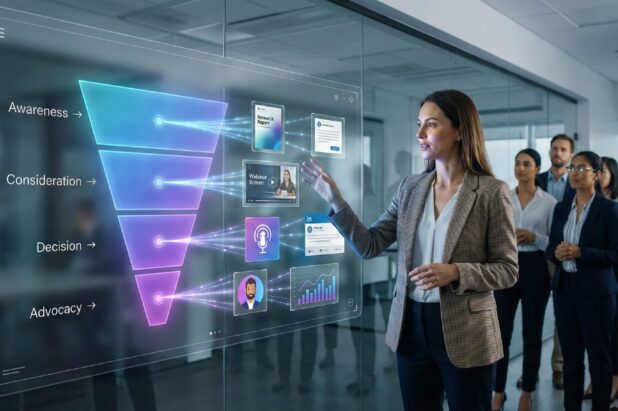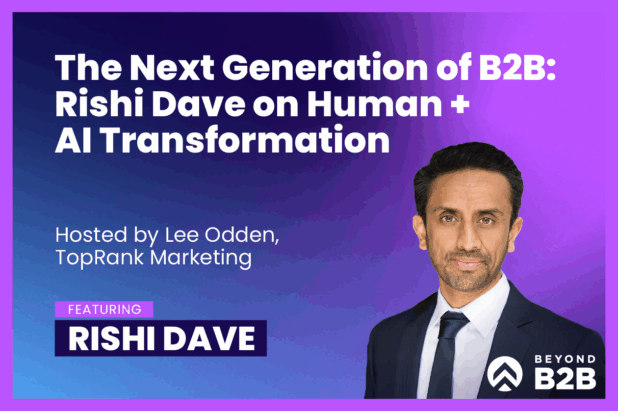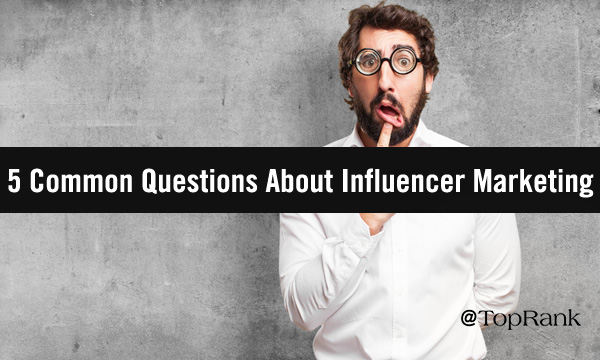
Greetings friend! If you’re here, I assume it’s for one of three reasons:
- You’re interested in the concept of influencer marketing and want to identify if it’s a fit for your B2B brand.
- You’re dabbling in influencer marketing and are looking for ways to formalize your strategy.
- You fell down some crazy internet rabbit hole and you aren’t quite sure how you got here.
Regardless of the reason, I’m happy you’re here.
Today, we’re going to dig into five essential questions that many B2B marketers are asking themselves about influencer marketing—everything from what it actually is (very important) to how to gain leadership buy-in and show value.
So dig in, enjoy the ride and be sure to add any of your own questions in the comments!
What is Influencer Marketing in the Context of B2B?
When most of us hear the phrase “influencer marketing” our brains quickly jump to an image of the reality stars we love to hate pushing their latest protein shake or fashion wear.
But don’t fret B2B marketers, that’s not what we’re talking about today.
At the core, influencer marketing for B2B is about partnering with industry experts to add credibility to and support great brand content.
I think our CEO Lee Odden describes it best when he says:
Influencer marketing activates internal and industry experts with engaged networks to co-create content of mutual value and achieve measurable business goals. - @leeodden Share on XDoes B2B Influencer Marketing Really Work?
Ok, I get it, you have to ask this question. As with any new digital marketing tactic, it’s important to understand the data behind it before you jump in.
Let’s start with the research:
- 49% of consumers depend on influencer recommendations (ION)
- Influencer campaigns earn $6.50 for every $1 spent (Tomoson)
- 22% of marketers say influencer marketing is the most cost-effective method of obtaining new customers (Tomoson)
Depending on your objective, there are many places you could start on your influencer marketing journey. Let’s assume for a second that you’re looking to build awareness around a new offering aligned with tech innovation in your industry. However, your audience is either resistant to or not aware of the benefits of this offering.
That is exactly what our client Prophix was experiencing around the topic of artificial intelligence (AI) in the finance industry.
Their target (finance professionals) will very shortly see the impact of AI on their business but are understandably a bit leery and unsure of what that really means. So, we enlisted the help of finance and AI pros to tackle the topic with a fun, interactive, multi-media twist.
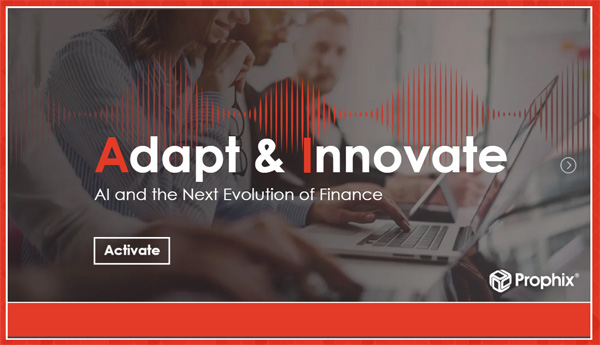
The result?
- 642% increase in engagement
- 10% conversion rate to a gated asset
- 86 new keyword rankings
And that’s just the tip of the iceberg. Dive into the full story here. Looking to “crush” the competition? Check out this other interactive, quiz-based influencer project from Prophix.
Want these results for yourself? Contact us to get started!
What Will it Take to Get Leadership Buy-In on Influencer Marketing?
The most effective way to get leadership on board with a new program like influencer marketing is to do your homework, devise a hypothesis and recommend a pilot.
Executive leadership teams will want to see proof that influencer marketing is not only a viable tactic but also one that can support the objectives of their business.
The nature of influencer-content programs is that they can support multiple objectives from awareness to engagement to conversion. When you’re developing your list of tactics and determining what types of influencers you’d like to work with, you have to keep your objectives in mind.
As with any tactic, it’s important to show how an influencer program can support key business objectives. Before going all-in, work with your internal team or an influencer marketing agency to develop a pilot that will allow you to show success.
Should You Focus on Short-Term Gain or Long-Term Reward?
When you’re working on getting leadership buy-in for an influencer program, a pilot program is typically best. But what are your options for optimal success once you’ve made it through the initial phase?
There are many phases on the road to influencer marketing maturity, but for the sake of simplicity, we’ll focus on two.
Influencer Campaigns
Large- and medium-sized brands are often looking for influencer campaigns to help generate awareness around a specific idea quickly. Campaigns are a great source for shedding light on a new idea and creating a splash in the industry. This approach has proven to be very effective; campaigns create spikes of activity.
However, all of the hard-work and buzz eventually wears off if you don’t make a significant investment in ongoing promotion and optimization. Once you move on from promoting and optimizing campaign assets, your content (and the relationships you’ve begun to build with influencers) will lose its value.
Always-On Influencer Programs
If you’re looking for an integrated, long-term play, an always-on approach to influencer marketing is your best bet. Over time, you can focus on aligning your brand with the right influencers (which we’ll explore below) and open the door for opportunities that include, but are by no means limited to content creation.
You can also recruit experts to speak at industry events, host webinars, share briefings, spotlight interviews—the options are really endless. In addition, you can still integrate campaigns into the always-on influencer marketing mix. This integration can enhance your audience and influencer nurturing capabilities, create a steady content drumbeat and more.
Ultimately, you have to decide: Do you want the quick small win or the long-term steady benefit?
Read: Better Together: Why Your Content Marketing Campaigns & Always-On Programs Should Work in Harmony
How Do You Choose the RIGHT Influencers for Your Brand?
This is somewhere where I could spend a LOT of time sharing insights from my five-plus years as a B2B influencer marketing strategist. As we talked about earlier, finding your right influencer mix means the right tactics, the right topics and the right experts.
Let’s say for example that you are a marketing a little show called Stranger Things. And in this role, you’re interested in promoting some very specific topics surrounding this group of characters.
First, you’re going to want to identify the topics that are most important to your audience and how they align with the topics you want to be known for. Here’s an example:
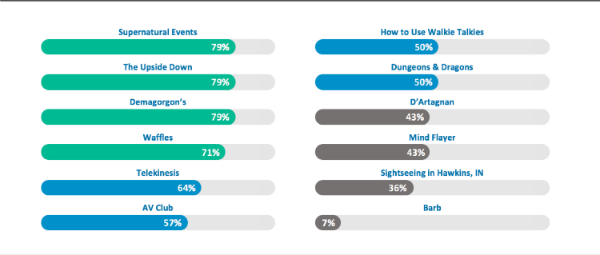
Then, you’ll need to determine what types of influencers (aligned with your target topics) will be the best fit based on your objectives. Each influencer type holds a different value for your audience and your brand. Here are a few brief descriptions:
- Brandividual: A recognizable expert in the field with extensive network size who will broaden your network reach.
- Up-and-Comer: An individual who resonates well with their audience and is someone very motivated to engage and share.
- Niche Expert: A unique expert who can provide deep expertise on very specific topics. This kind of thought leaders also provides hyper-relevant content for your audience.
- Internal Expert: An internal expert or leader within your company, this individual can help build brand recognition and thought leadership.
- Customer: An existing customer who fits ideal customer profiles who can help prospects see themselves in the content—and your brand.
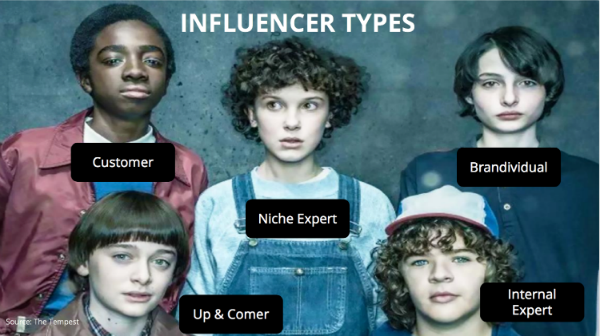
Is B2B Influencer Marketing Right for My Brand?
Now that we’ve covered the basic questions about developing a successful B2B influencer marketing strategy, it’s time for you to ask yourself: Is Influencer Marketing right for my brand? The vast majority of the time, there is absolutely an opportunity to collaborate with influencers to co-create content and show success.
What additional questions are you trying to answer to determine if B2B influencer marketing is a fit for you? Tell us in the comments section below.
